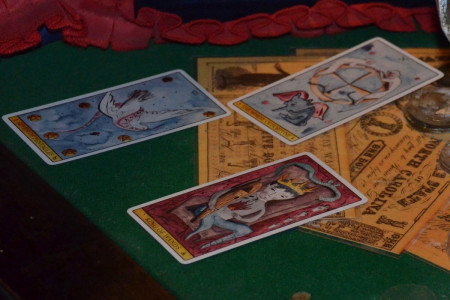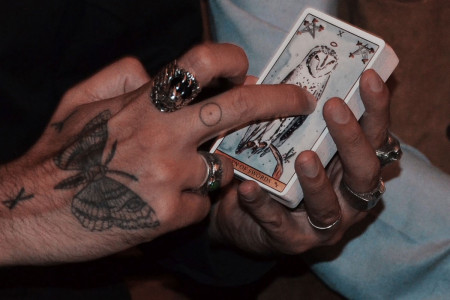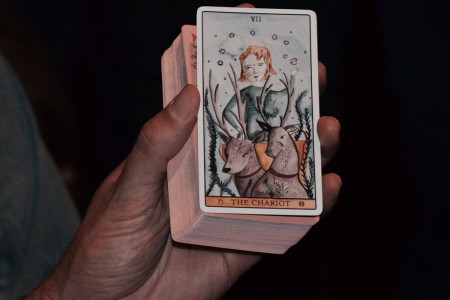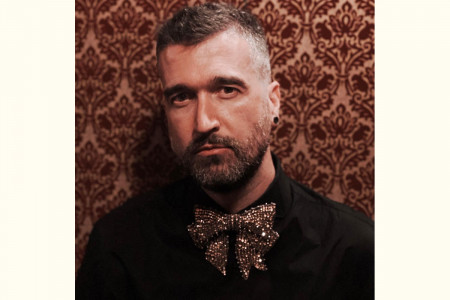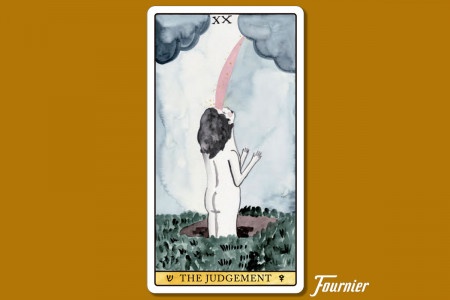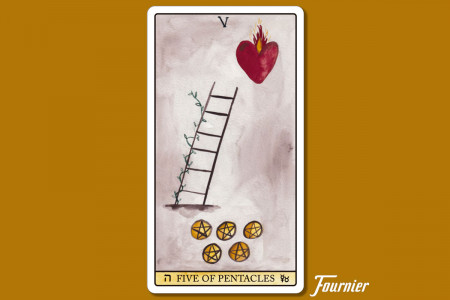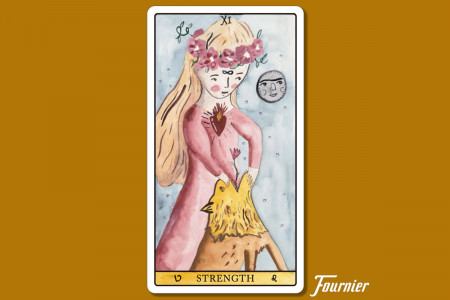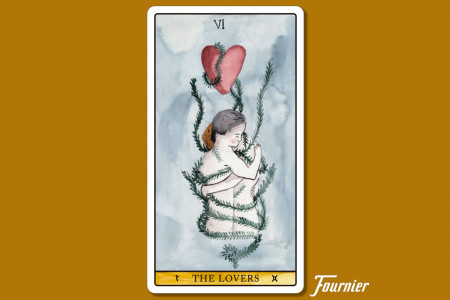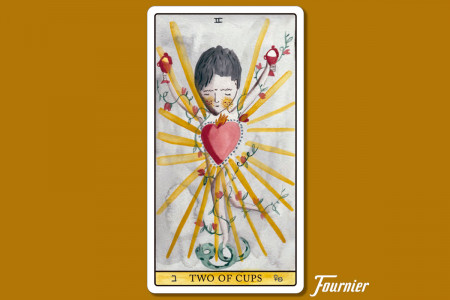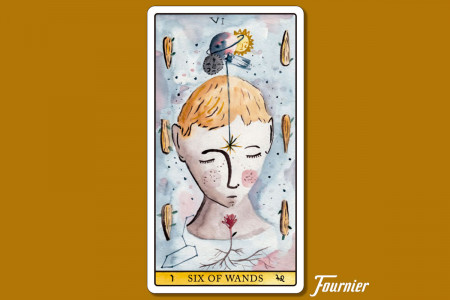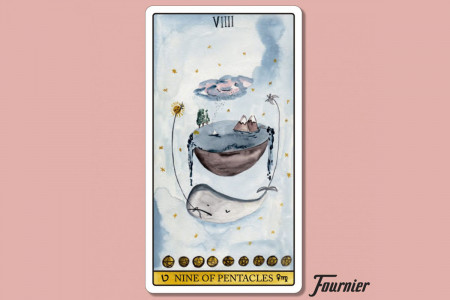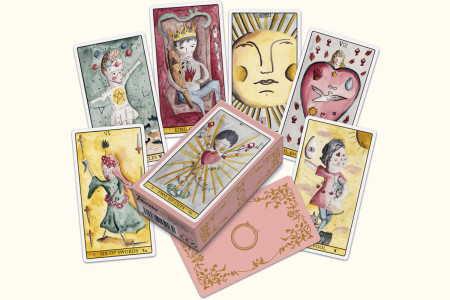Description
Aitor Saraiba (Talavera de la Reina, Spain, 1983) is best known as a visual artist, as the author of delicate drawings of shattering honesty and as the initiator of projects outside disciplinary boundaries. He speaks about his own themes - pain, sex, trauma, memory, death or reconciliation.
After many years in contact with tarot symbology, Aitor Saraiba has finally created his own and has published it with Naipes Heraclio Fournier, a world reference in the field of playing cards, tarots and board games.
Tarot by Aitor Saraiba is a generator of Light. A candle in the darkness on the path of the human being. The Tarot of Light is a guide that helps us to analyze our present through archetypes and a lot of poetry. To create the Tarot of Light, Aitor Saraiba has revisited many previous and almost forgotten works to create a tarot that embraces change.
Tell us a little about your relationship with the mystery of tarot.
I began studying the Tarot two decades ago. It came into my life when I was very young and I fell in love with its multiple visions, its hundreds of possible stories that can be told through its cards, the immortal archetypes that it contains and that continue to decipher the meaning of the Human Being in the Universe.
Since then it has had a very direct influence on my work and now, at last, being able to make my own Tarot is a dream come true.
How did you approach the project?
I started collecting decks and decks of tarot cards. I compared one with another, tried to see what one brought and what another eliminated. I analyzed the history of this unique tool of which we still don't know much about its history.
One of the things that bothered me the most was to see into the hands that the Tarot had fallen many times and how they had turned it into an object surrounded by charlatans, obscurantism and superstition. I wanted to create a deck that would flee from all that, I wanted to return as much as possible to the origins of this pocket cathedral, as A. Jodorowsky had so aptly defined it on one occasion.
That is why my deck is called Tarot De Luz, the Tarot is nothing more than a generator of Light. A candle in the darkness on the path of the human being, the tarot is a guide that helps us to analyze our present through archetypes and a lot of poetry.
What difficulties did you encounter?
One of the difficulties was to face the Minor Arcana, which are often neglected and only the Major Arcana are taken into account. I wanted to elevate some Arcana to the same place as others, to show that the mythical cards such as Death or the Fool are as important as the V of Wands or the King of Cups.
To unite the complete Tree of Life that forms the Tarot, that flowchart of archetypes and symbols, that the person who holds my deck in his hands can interpret with all the cards that compose it.
The iconography of the Tarot dates back to the 12th-16th centuries. What does it mean to you to give it the twist you have given it?
For many of the cards I have traveled further back in time than those centuries and I have traveled further back in history to recover certain pagan symbols and meanings, which in decks like the Marseilles deck was very Christianized. I have tried, for example, to change the Pope's card, which has purely Christian connotations, and in its place I have put an oak branch, which for me makes more sense in that card and has a more powerful link with our ancestors.
Like this detail, there are many, hundreds, that I have modified and studied of the 78 cards that make up the Tarot. My work has been not to fall into the basic symbology and go further by working with numbers, alphabets, colors and symbols that for thousands of years have been linked to ascending to enlightenment.
Can you tell us something about the meaning of some of the cards?
The Tower, for example, is a tremendously misinterpreted card in most Tarot decks and manuals. They see a crumbling building and two people falling into the void with a frightened look on their faces. In the Tower for Light Tarot I have revisited many earlier and almost forgotten works, in which that card is shown as change blossoming, and the happy characters in it celebrate by dancing around confetti. It's an embrace of change, it's the symbol of transformation and breaking out of the chrysalis and spreading your wings.
What have you captured of your personality in this tarot?
I am in each of these letters. And each one of these cards is in me. No doubt after the process of creating this deck I am no longer the same person as when I started, the Tarot has guided me for many years, but it was not until I created my own deck that the transformation was complete and its effect irreversible.
Heraclius Fournier playing cards will be 150 years old in 2020
In 2020, Fournier turned 150 years old. A historic milestone for the vast majority of companies.
In the creation of that small printing house in Plaza España in Vitoria, was the germ of what Heraclio Fournier was to achieve throughout his life. Visionary in his time, after a prosperous start using innovative printing methods, in 1877, he asked a professor of the School of Arts and Crafts of Vitoria, Mr. Emilio Soubrier and the painter Díaz de Olano, to design a deck of cards.
This moment marked a before and after in the history of the company. This deck of cards is the prelude to the current Spanish playing cards. Today, this deck of cards is still successfully manufactured and has been named as an icon of Basque and Spanish design of all times.
We must not forget that this combination of know-how in the world of printing has and must go hand in hand with this collaboration with great artists and illustrators. Hence, this coming anniversary year, we wanted to have several of the best illustrators and illustrators that exist in our environment.
Great artists who, in this way, have joined the list of more than 2,000 great illustrators, artists and designers who have worked throughout history with our company. And who, together with us, have made not only the history of Fournier but also the history of design and illustration in Spain.
Aitor Saraiba joins the list of great national and international illustrators with whom we have had the pleasure of collaborating. Among hundreds of other illustrators we can find Amaia Arrazola, El Dios de Los tres, Ana Juan, Eduardo Chillida, Mariscal, Luis Royo, Ricardo Cavolo, Elena Odriozola, Noemí Villamuza, Maite Gurrutxaga or Yolanda Mosquera, to name a few.
Today Fournier is synonymous with quality, service, safety and durability, and under these parameters we continue to work to bring excitement to social gatherings, learning methods for children, safety to casinos and brand projection to companies under the slogan 150 Years Playing Together.
